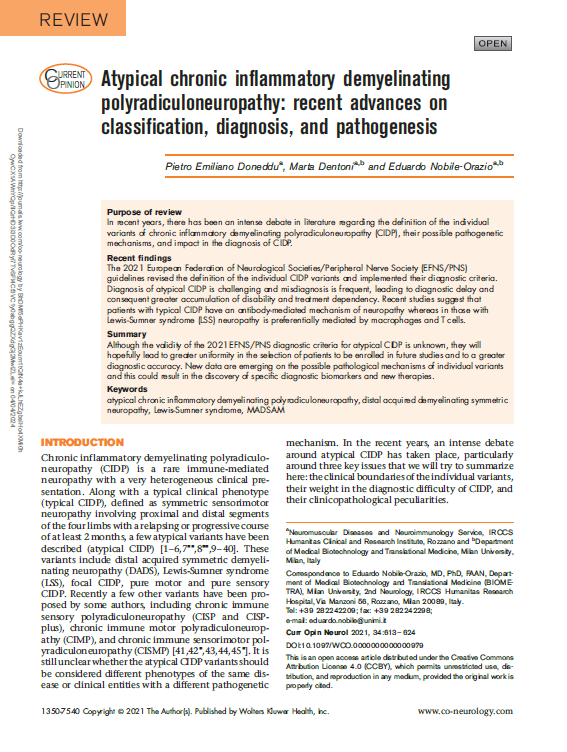Atypical chronic inflammatory demyelinating polyradiculoneuropathy: recent advances on classification, diagnosis, and pathogenesis
October 2021
Abstract
Purpose of review
In recent years, there has been an intense debate in literature regarding the definition of the individual variants of chronic inflammatory demyelinating polyradiculoneuropathy (CIDP), their possible pathogenetic mechanisms, and impact in the diagnosis of CIDP.
Recent findings
The 2021 European Federation of Neurological Societies/Peripheral Nerve Society (EFNS/PNS) guidelines revised the definition of the individual CIDP variants and implemented their diagnostic criteria. Diagnosis of atypical CIDP is challenging and misdiagnosis is frequent, leading to diagnostic delay and consequent greater accumulation of disability and treatment dependency. Recent studies suggest that patients with typical CIDP have an antibody-mediated mechanism of neuropathy whereas in those with Lewis--Sumner syndrome (LSS) neuropathy is preferentially mediated by macrophages and T cells.
Summary
Although the validity of the 2021 EFNS/PNS diagnostic criteria for atypical CIDP is unknown, they will hopefully lead to greater uniformity in the selection of patients to be enrolled in future studies and to a greater diagnostic accuracy. New data are emerging on the possible pathological mechanisms of individual variants and this could result in the discovery of specific diagnostic biomarkers and new therapies.

